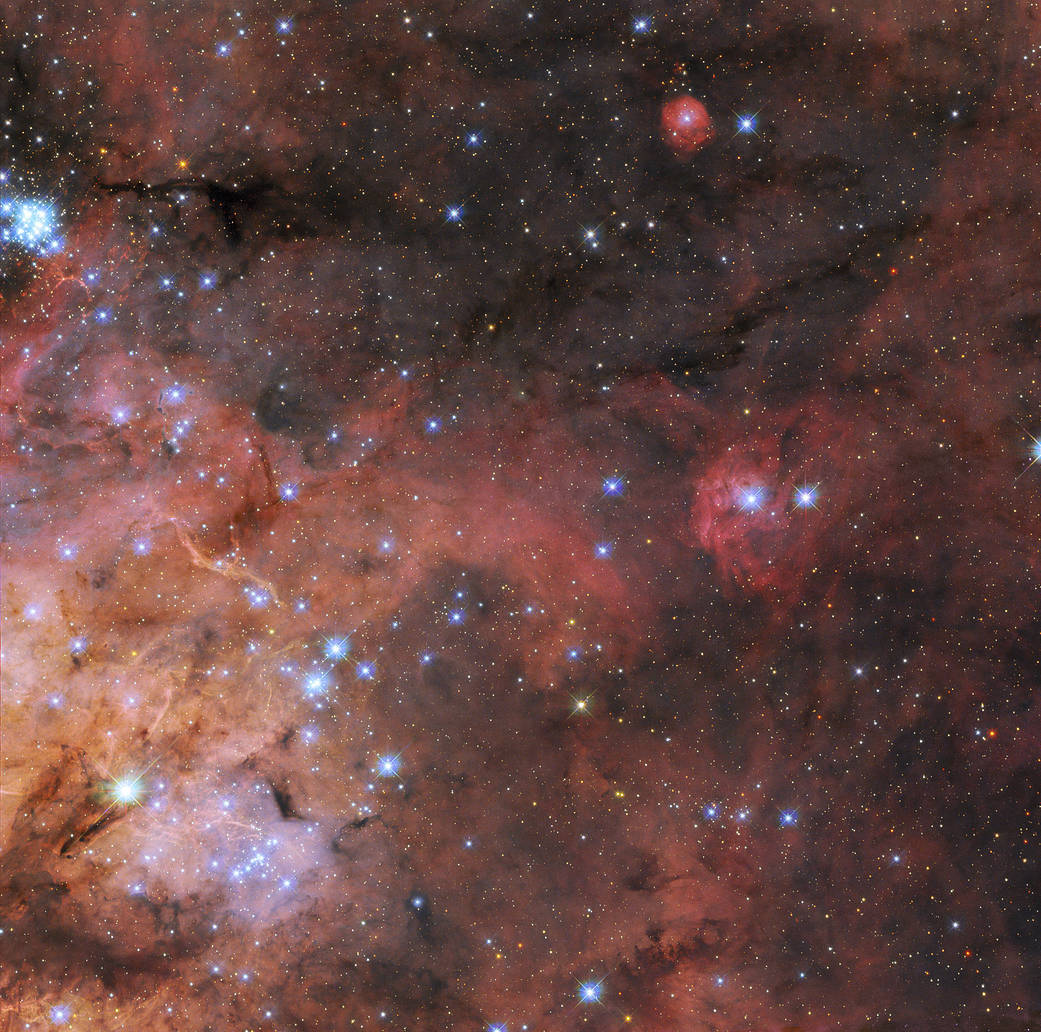5.02.2023

A snapshot of the Tarantula Nebula (also known as 30 Doradus) is featured in this image from the NASA/ESA Hubble Space Telescope. The Tarantula Nebula is a large star-forming region of ionized hydrogen gas that lies 161,000 light-years from Earth in the Large Magellanic Cloud, and its turbulent clouds of gas and dust appear to swirl between the region’s bright, newly formed stars.
The Tarantula Nebula is a familiar site for Hubble. It is the brightest star-forming region in our galactic neighborhood and home to the hottest, most massive stars known. This makes it a perfect natural laboratory in which to test out theories of star formation and evolution, and Hubble has a rich variety of images of this region. The NASA/ESA/CSA James Webb Space Telescope also recently delved into this region, revealing thousands of never-before-seen young stars.
This new image combines data from two different observing proposals. The first was designed to explore the properties of the dust grains that exist in the void between stars that make up the dark clouds winding through this image. This proposal, which astronomers named Scylla, reveals how interstellar dust interacts with starlight in a variety of environments. It complements another Hubble program called Ulysses, which characterizes the stars. This image also incorporates data from an observing program studying star formation in conditions similar to the early universe, as well as cataloging the stars of the Tarantula Nebula for future science with Webb.
Text credit: European Space Agency (ESA)
Image credit: ESA/Hubble & NASA, C. Murray, E. Sabbi; Acknowledgment: Y. -H. Chu
Quelle: NASA
